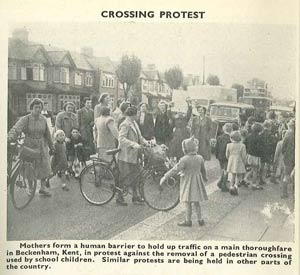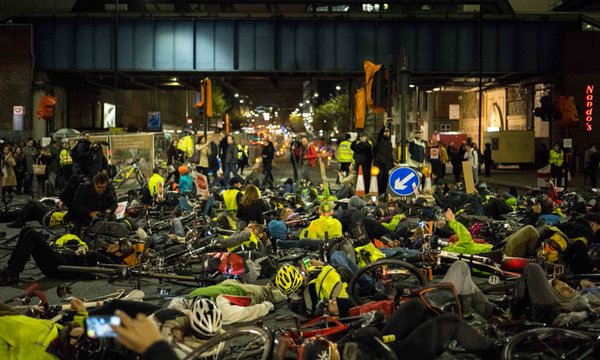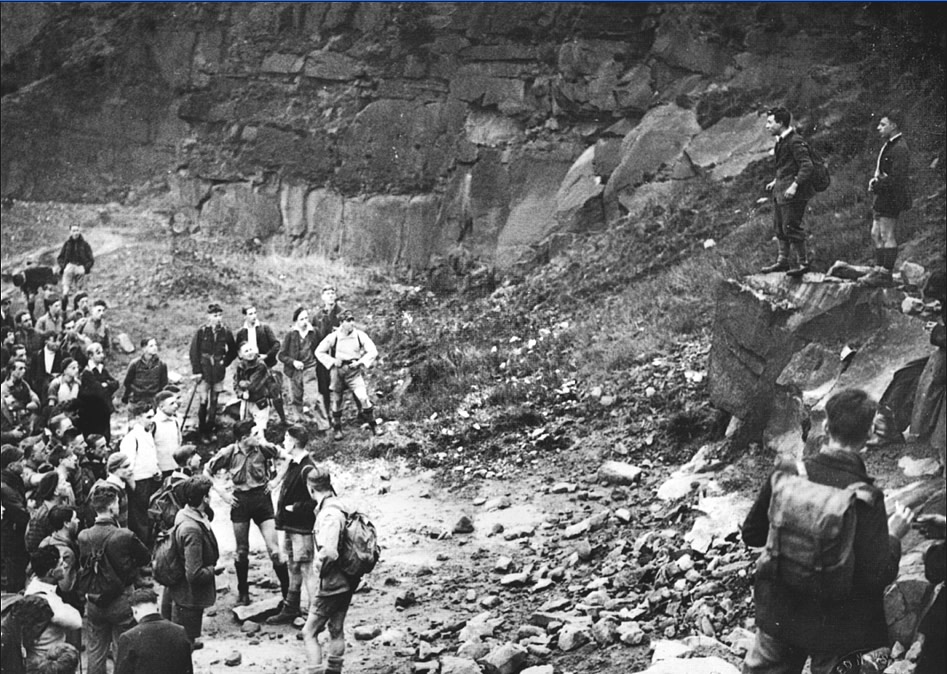
Best practice: Campaigning
Campaigning for the safety of pedestrians should not be necessary. We do not need to campaign to pursuade our hospitals to treat children with broken legs or head injuries, so why should we have to campaign to pursuade politicians, officials and the police to prevent them.
Campaigning using the democratic process
- Write to councillors, officers or MPs (letters or emails)
- Write to newspapers
- Take part in consultations
- Sign or start petitions
Non-violent direct action
If the democratic process is failing and there is some kind of misconduct or malpractice e.g.
- information is being withheld
- false information is being provided
- there is no genuine consultation
- human rights are not being respected
- decisions are not based on evidence
Examples of direct action being used to fight for justice
1. How the Dutch got their cycle paths
A mass die-in outside the Amsterdams Rijksmuseum in the 70's:

See full video at https://www.youtube.com/watch?v=XuBdf9jYj7o explaining how the excellent Dutch cycle network was won by confronting the decision-makers who were prioritising car travel over child safety.
2. Crossing protest
Mothers form a human barrier to hold up traffic in Beckenham, Kent in protest against the removal of a pedestrian crossing used by school children.

3. #NoMoreCoffins demonstrations in London
Regular "Die-ins" are held in London to fight for a fair share of road space for cyclists. The vigourous campaigning style has been credited with changing the culture of transport planning in London, with many segregated cycle tracks and cycle superhighways now being built.

4. Kinder Scout and other mass trespasses
The north of England has a proud history of people fighting for access rights such as

Quotes
- Our lives begin to end the day we become silent about things that matter. (Martin Luther King)
- All that is necessary for the triumph of evil is that good men and women do nothing. (paraphrasing Edmund Burke)
- A freedom fighter learns the hard way that it is the oppressor who defines the nature of the struggle. (Nelson Mandela) [4]
- Force is all-conquering, but its victories are short-lived. (Abraham Lincoln)
- Do I not destroy my enemies when I make them my friends? (Abraham Lincoln)
- Relentless optimism is what moves the world forward. (Apple video)
- Never doubt that a small group of thoughtful, committed citizens can change the world. Indeed, it is the only thing that ever has. (Margaret Mead) [5]
References
| [1] | Direct action for social justice (2012) Peter Tatchell http://www.campaigncentral.org.uk/opinion/direct-action-social-justice |
| [2] | Mass trespass on Latrigg recalled (2015) http://www.cwherald.com/a/archive/mass-trespass-on-latrigg-recalled.440708.html |
| [3] | Kinder trespass: Spirit of Kinder http://kindertrespass.com |
| [4] | Nelson Mandela Long Walk to Freedom (The full text is "A freedom fighter learns the hard way that it is the oppressor who defines the nature of the struggle, and the oppressed is often left no recourse but to use methods that mirror those of the oppressor") |
| [5] | http://www.quotationspage.com/quote/33522.html |
